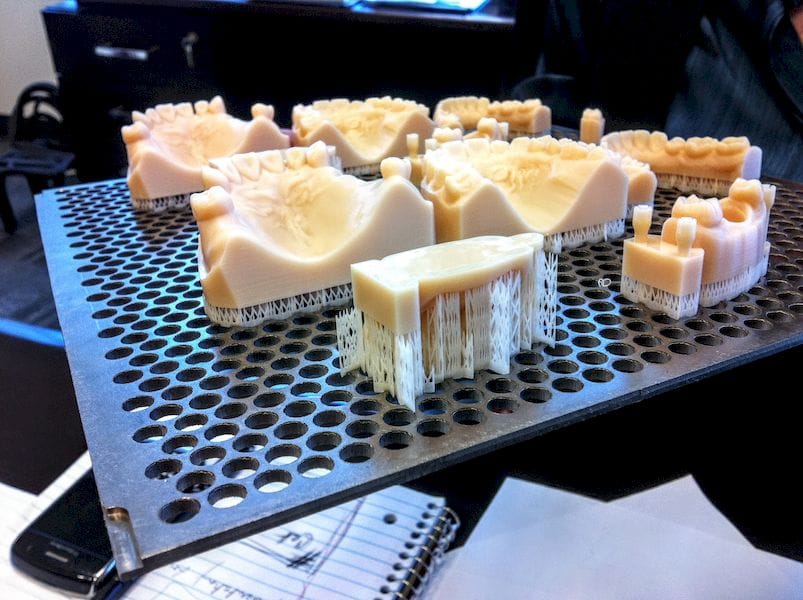
Replacement teeth and dental appliances aren’t new technology — even George Washington, the first president of the United States, wore wooden dentures.
Making traditional dentures or other appliances hasn’t changed much in the intervening years — until now. 3D printing quickly changes the way we look at dentistry. What can 3D printing do for dentistry and how can it change the way we get our teeth fixed and replaced?
Traditional Techniques
Traditional dentistry for appliances and dentures hasn’t changed much. It usually includes an x-ray to detect the problem, a rubber cast of the existing tooth and jaw structure, and a plaster mold made from the rubber cast.
Once the plaster mold is made, the appliances or dentures can form. This can take days or weeks, depending on whether or not the dentist has a lab on site or the mold goes to an external lab.
Once the appliance has been completed, it will need adjustments to create the perfect fit — and likely adjusted further in the future if needed.
These aren’t always the most accurate reproductions, though they are as accurate as traditional methods allow.
3D Printing in Dentistry
There are a number of different applications for 3D printing in dentistry, including:
- Customized crowns, dentures, and other appliances — By scanning the patient’s mouth with a 3D rendering wand, the dentist can program their 3D printer to make perfectly sized replacements
- Orthodontic Models — Creating a traditional model of one’s teeth requires biting into clay or rubber that can later cast in plaster. With a rendering wand and a 3D printer, a patient’s entire mouth can be scanned, rendered and printed within a couple of days.
- Repair/Replace Damaged Teeth — Dental implants are a great alternative to dentures, but only if they fit correctly. A 3D printed implant can be designed to fit perfectly to the patient’s mouth and printed in a few hours.
- Surgical Tools — Custom tools can be expensive to design and fabricate unless you have a 3D printer. This isn’t restricted to dentistry though — NASA recently designed a tool and sent the file to print on a 3D printer on the International Space Station.
- Surgical Guides — The tools used to guide a surgeon who drills into a patient’s jaw to place dental implants are usually made using the same traditional techniques. With 3D printing, these tools can be made of a sterilizable material and completed in a few hours.
- Invisible Braces — These invisible retainer-style braces can easily print in a few hours once the patient’s mouth has been scanned. When a new set is needed, it’s a simple task to scan and print a new one.
With the proper tools and software, dental appliances no longer need to be sent out to off-site labs for completion. They can be scanned, designed and printed in-house in a matter of hours or days, depending on the size of the necessary appliance.
The Benefits of 3D Printing
Why is 3D printing having such an impact on the world of dentistry?
First, 3D printed appliances are cheaper than those made traditionally. This seems standard across medicine though — traditional prosthetic limbs, for example, usually cost thousands of dollars. With a 3D printer, they can be made for a few hundred. This reduced cost can pass on to the patient in the form of savings — a blessing for anyone without comprehensive dental insurance.
It’s not just cheaper for the patients though — it’s cheaper for the dentists too. It can cost upwards of USD$100,000 to set up an in-house lab. A medical grade 3D printer generally only costs around USD$20,000.
The appliances made with 3D printers are also more accurate and last longer than their traditionally crafted counterparts.
A small 3D printer might not look like much, but with careful design and a decent computer, you can build about anything. These technological advances steadily change how we look at dentistry — and how we look at medicine as a whole.

